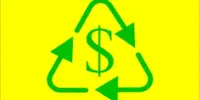The demand curve should account for factors such as taste, income, expectations, price of related items and the number of buyers available. Economists and businesses use the demand curve to attempt to gauge some of the behaviors of consumers in the marketplace.
It is a graphical representation of price- quantity relationship. Individual demand curve shows the highest price which an individual is willing to pay for different quantities of the commodity. While, each point on the market demand curve depicts the maximum quantity of the commodity which all consumers taken together would be willing to buy at each level of price, under given demand conditions.

Demand curve has a negative slope, i.e, it slopes downwards from left to right depicting that with increase in price, quantity demanded falls and vice versa. The reasons for a downward sloping demand curve can be explained as follows-
- Income effect- With the fall in price of a commodity, the purchasing power of consumer increases. Thus, he can buy same quantity of commodity with less money or he can purchase greater quantities of same commodity with same money. Similarly, if the price of a commodity rises, it is equivalent to decrease in income of the consumer as now he has to spend more for buying the same quantity as before. This change in purchasing power due to price change is known as income effect.
- Substitution effect- When price of a commodity falls, it becomes relatively cheaper compared to other commodities whose price have not changed. Thus, the consumer tend to consume more of the commodity whose price has fallen, i.e, they tend to substitute that commodity for other commodities which have not become relatively dear.
- Law of diminishing marginal utility- It is the basic cause of the law of demand. The law of diminishing marginal utility states that as an individual consumes more and more units of a commodity, the utility derived from it goes on decreasing. So as to get maximum satisfaction, an individual purchases in such a manner that the marginal utility of the commodity is equal to the price of the commodity. When the price of commodity falls, a rational consumer purchases more so as to equate the marginal utility and the price level. Thus, if a consumer wants to purchase larger quantities, then the price must be lowered. This is what the law of demand also states.
















